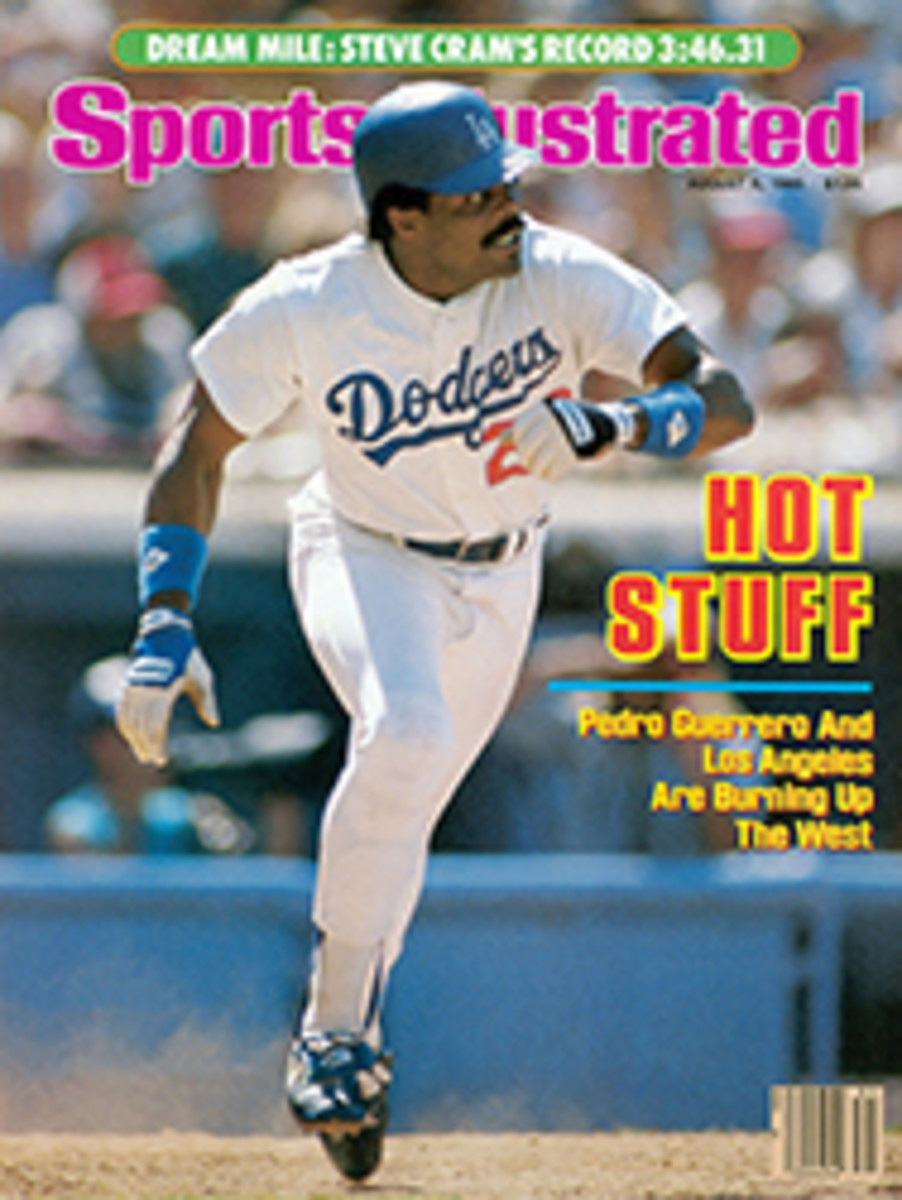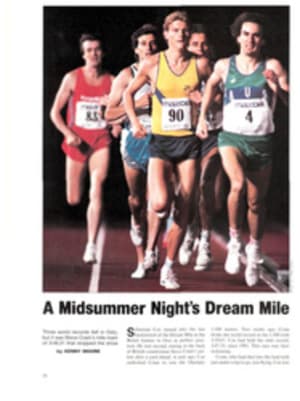
A FASTBALLER'S PIPE DREAM GOES UP IN SMOKE BEFORE A MIDWAY RADAR GUN
God made radar guns to get two kinds of people: drivers with heavy feet and old ballplayers with big egos. Unfortunately, this revelation hit me a split second late, just after I decided to test my fastball at Jack and Jake's Radar Ball, a baseball pitch game at a firemen's carnival in New Windsor, Md.
In June my family and I visited my mother during what folks in New Windsor call Carnival Week. As we motored toward my old hometown I described to Matt, our 10-year-old, summer nights in the 1950s when I, as an artful little dodger, moved along the midway, beating the flimflammers and hustlers at their own games.
"Ring a dinga, ring a dinga! Ring the dinga and win a cigar," the barker would cry, flexing his biceps.
"Guess your weight—win a prize!" the weight lady would shout.
During my hammer-swinging days, the ringer never climbed past the mark that said MOMMA'S BOY. My true calling was as a carnival ballplayer. As a Little League catcher I couldn't throw out a runner for all the stuffed animals at the Maryland State Fair, but when it came to easy pitch games like the old milk-bottle toss, my arm was in a league of its own. I'd plunk down two bits, get up on my tiptoes, lean across the counter and flick the horsehide into the neatly stacked bottles. Bull's-eye!
So this spring when Matt and I stepped out on the midway on our first night in town, saw the booth with the big J & J Radar Ball sign and heard the guy in the red golf shirt barking about "the easy pitch baseball game," I was intrigued. "Step right up, throw the baseball, best game on the midway," he said, giving me the once-over. "You don't have to throw hard to win." As Matt and I slipped into the crowd of onlookers, a teenage kid in a yellow WHY WALTZ WHEN YOU CAN ROCK-'N'-ROLL T shirt was forking over 50 cents. "O.K., step back, folks, we've got a ballplayer. Let's watch his speed. Right here." He pointed to the speed gun's digital display board.
The rock-'n'-roller went into a windmill windup, kicked his leg and threw. Whop! The display board whirred and stopped at 62. For the next 30 minutes I stood among the noisy spectators watching young arms crank up and fog pitches past the radar gun. As their speeds clicked up on the readout, the onlookers filled the air with cheers and jeers. "Sixty-five miles per hour, sorry, you guessed 68. Try again!" the barker shouted. While the procession of would-be Gossages and Ryans chucked away, Jake Townsley, one of the two enterprising young phys ed coaches who spend their summers touring Maryland's carnival circuit with J & J Radar Ball, offered some insights into the game.
"The idea is to take two practice throws and guess the speed of your third pitch, but most people play to see how fast they can throw. I guess it's macho, or whatever you want to call it. But the speed of fastballs varies so much that the hard throwers rarely win," he said.
I learned that the most likely customers to win are the 9-to 12-year-olds. "The kids will always throw right around their top speed. They'll crank out a 40 mph, come back with a 39 mph, guess 41 and hit it right on the number. The Little Leaguers beat us to death," Jake said.
How good is the gun, I asked of the JUGS Super Gun II. "Guaranteed to be accurate within one mile either way. It's the same gun they use to clock major league fastballs," he said.
As Jake and I talked, Jack Baile (the other J) stood at the front of the booth juggling baseballs and chattering nonstop to the prospective customers. "Easy does it, step right up, no waiting, throw the baseball, pitcha pitcha!"
Above Jack's juggling act, tacked to the top of the cage, was the game's leader board. The speeds of the week's fastest throwers were logged by age and sex. William Forney, in the 16-to-19-year-old bracket, topped the male ledger with an 82-mph throw, and Teri Leatherwood led all the women with a heave of 62.
"Dad, how fast can you throw?" Matt asked.
"Oh, I don't know, somewhere between Bill and Teri, I guess," I said and nodded toward the board. Jack reached up, plucked one of his juggling baseballs out of the air and tossed it to me. "Here, give it a try," he said. I hot-potatoed the ball to Matt, dug into my pocket and pulled out a couple of quarters. "I think my son wants to give it a shot," I said.
While Matt fired up several dollars' worth of 30-to-35-mph fastballs, I began to feel a bit queasy. Call it radarphobia if you like, but I was caught between a notoriously weak right arm and an ego all muscled up and ready to throw. In one ear I could hear a replay of Harry Lambert, my old high school coach, critiquing one of my patented rainbow pegs to second base. "Cairns, that's the first time in baseball history that an infielder had to flip down his sunglasses to take a catcher's throw," said the voice from my past. Then I heard Matt saying, "Come on, Dad, I did it, now it's your turn."
I started to walk away, but the old moxie from my carnival days erupted again. I parted the crowd, handed Jack the Juggler 50 cents and heard myself say, "I'll throw, but you can forget about fastballs. I'll be playing the game to win."
From this moment on, my memory is something of a blur. I can recall staring in at the canvas catcher and reading the sign that said HOW FAST CAN YOU THROW? And that's when my strategy went kaflooie. Before you could say "changeup," my left leg had kicked up at the leader board, and I was coming over the top, bringing the fastball. Thunk went the horsehide into the canvas catcher. The display board clicked, and through foggy eyes I read my arm its last rites. The readout said: 51.1 threw again: 49, and again: 52.
"Come on, Dad, there are three girls up there who threw faster than that," Matt said. I reached back for a little extra. Only the sweat came faster. How long the embarrassment continued only my son and half the population of my hometown can say. But when I topped out with a blistering 55, my arm was heavy and my wallet considerably lighter.
"Good job," Jack said. "Try again?"
"That's enough," I mumbled, and with the double fives still flashing in my head, I put my aching arm around Matt's shoulder, and we walked off into the lights of the midway.
A few days later as I drove the family south toward our home in Raleigh, N.C., Matt pointed out a big black and white sign along route I-95: DRIVE 55 SPEED CHECKED BY RADAR. I eased off the gas. "Hey, Mom, Dad was going faster than 55," Matt announced. "Not lately," I said and rubbed my sore right arm.
ILLUSTRATION
PATRICK McDONNELL
Bob Cairns is a writer in the Department of Information Services at North Carolina State and he coaches Little League in his spare time.

